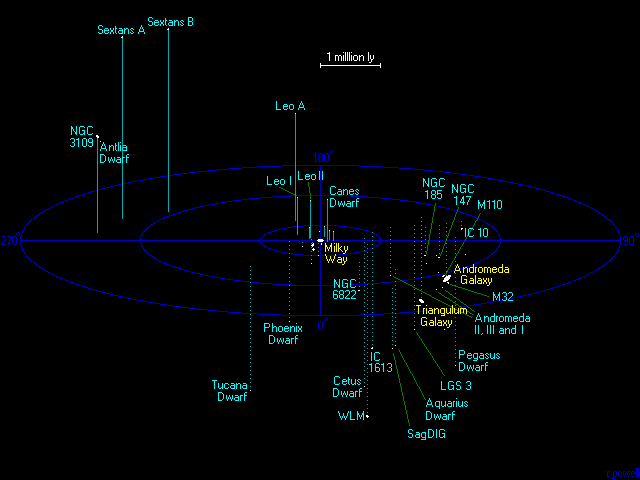You're welcome!edgardine wrote: ↑Wed May 16, 2018 12:21 pmThank you for your answer, Ann. (I really appreciate your work on color, there are so many inconsistencies about it)Ann wrote: ↑Wed May 16, 2018 8:55 amThis Wikipedia article about the Hubble sequence identifies the Large Magellanic Cloud as an irregular galaxy. However, I think it could be argued that the LMC might also be classified as an SBd galaxy:edgardine wrote: ↑Wed May 16, 2018 6:16 am So glad about gaia's data.
However, one of the sentences seems to be outdated information "The LMC [...] is a spiral galaxy that has been distorted by encounters with the greater Milky Way Galaxy and the lesser Small Magellanic Cloud."
Recently, I read some articles about the past encounters of Andromeda, in which they said that the LMC has been distorted then.
I may be wrong
If you take a look at this picture of the Large Magellanic cloud, you might perhaps agree that the scattered regions of star formation surrounding the bar of the LMC do show some slight simiarities to spiral arms.Sd (SBd) – very loosely wound, fragmentary arms; most of the luminosity is in the arms and not the bulge.
Ann
It's not mine, either. I wonder how many gaffes I've made here over the years.English is not my native language,
Well, personally I wouldn't think that M31 has affected the Magellanic Clouds all that much. The Astrophysical Journal doesn't seem to think so, either.I probably did not express myself clearly. What I consider potentially outdated is that the LMC has been distorted by the Milky Way rather than by Andromeda.
I read a recent article about it, but I can not retrieve it.
Here are two
http://iopscience.iop.org/article/10.10 ... 2/924/meta
https://arxiv.org/abs/1010.2748
The Astrophysical Journal wrote:
For a range of LMC proper motions approximately 3σ higher than the mean and total Local Group mass >3.5 × 1012 M ☉, M31 can provide a significant torque to the LMC orbit. However, if the LMC is bound to the MW, then M31 is found to have negligible effect on its motion, and the origin of the high angular momentum of the system remains a puzzle.
http://www.atlasoftheuniverse.com/localgr.html
Take a look at the map at left. It shows the Local Group of galaxies. The Milky Way is in the middle of the map. Can you see the two little elongated white things to the left of it? I'd say that those little objects are the Magellanic Clouds. Note how close they are to the Milky Way! Note that the Andromeda galaxy is much farther away. It, too, has two little objects right next to itself. Those two little satellite galaxies are M32 and NGC 205.
I believe that it is fairly generally accepted that the Magellanic Clouds have been interacting with each other for quite some time, perhaps for a billion years or so. Most likely, though, the Magellanic Clouds were not snared by the gravity of the Milky Way until more recently.
So I'd say that the distorted shape of the LMC is mostly due to interactions with the LMC, but it is also caused by the mighty pull of the Milky Way.
Ann


